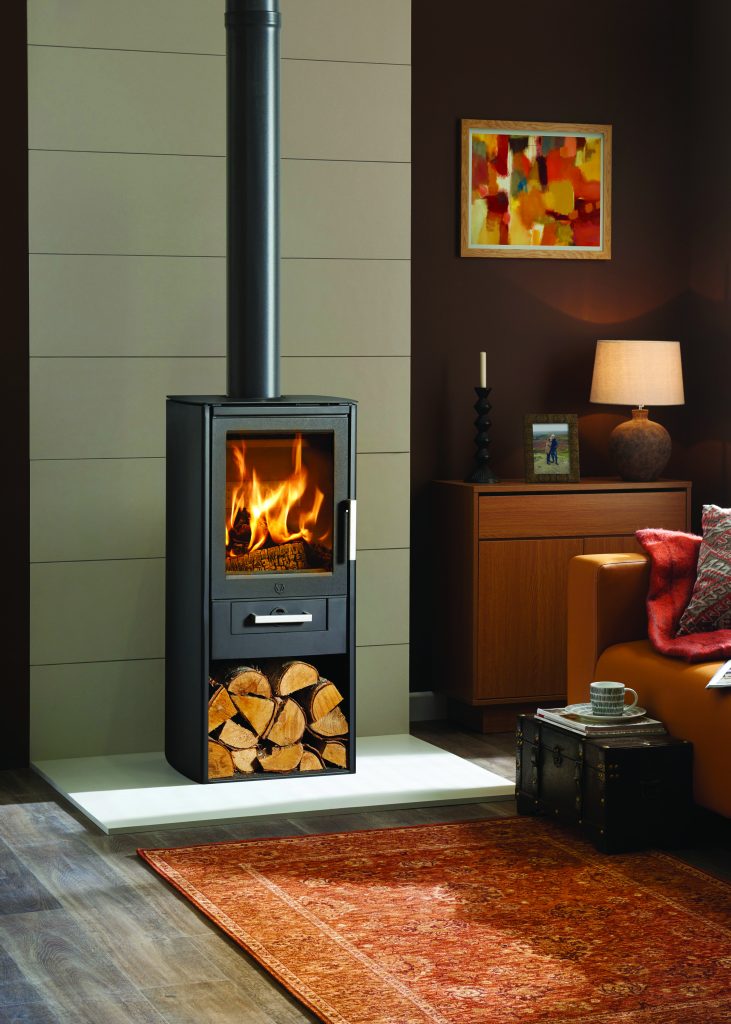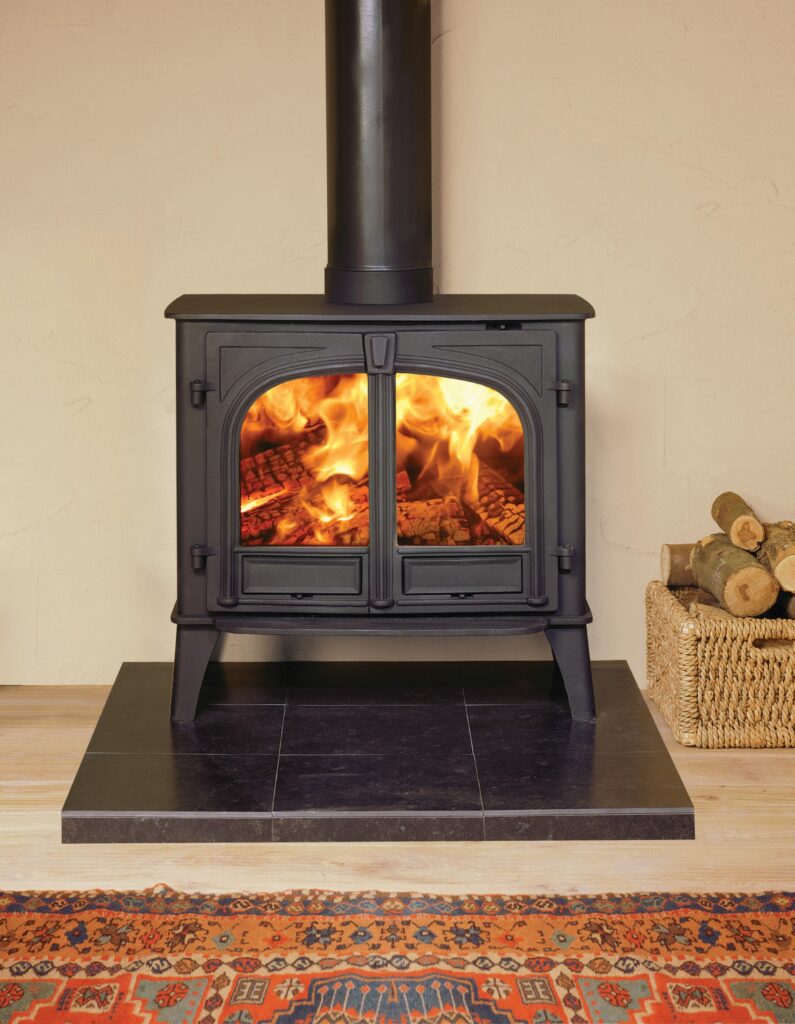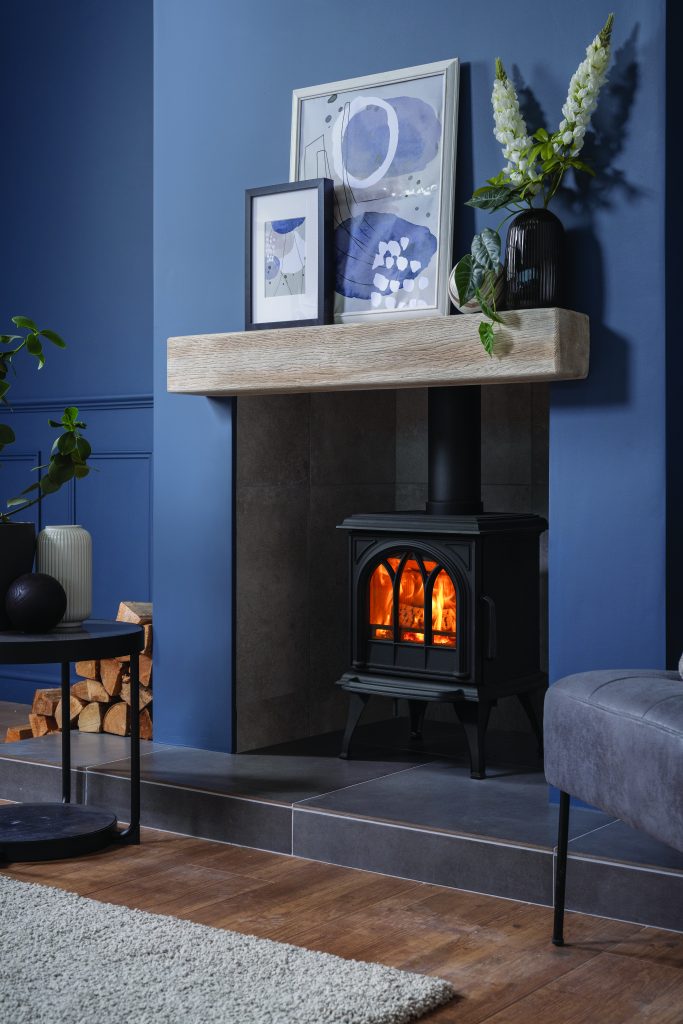If you’ve noticed your wood burning stove or multi-fuel stove giving off a bit of smoke, you’re definitely not alone and in most cases, it’s completely normal.
A smoky stove doesn’t always mean there’s a serious problem with your installation or your chimney. Often, it’s down to a simple cause that can be fixed in minutes. As professional stove installers, we see this all the time and a little know-how can go a long way toward a clear, efficient burn.
Let’s look at the most common reasons your stove might smoke, and what you can do about it.
A Cold Chimney or Flue
When your chimney flue is cold, the air inside it is heavy and dense which can stop smoke from rising properly. Instead, that smoke has nowhere to go but back into the room.
This happens most often when lighting the stove for the first time that day.
Expert tip: Before lighting your fire, warm up the flue. Roll up a piece of newspaper, light it, and hold it near the opening of the flue for a minute or two. Once the draft starts pulling air upwards, you can light your stove normally and the smoke should clear straight away.

Your Firewood Might Be Too Damp
If you’re burning wood that’s damp or ‘unseasoned’ it’ll smoke heavily because of the excess moisture. Wet logs don’t burn efficiently, instead of generating heat the water inside them turns to steam and produces smoke.
What to look for:
– Cracking at the ends of logs (a good sign it’s dry).
– A moisture content below 20%.
Expert tip: Use a moisture meter to check your firewood, and store logs somewhere dry and well-ventilated. Kiln-dried logs are ideal for a clean, efficient burn.

Opening the Stove Door Too Quickly
Its common, you open the stove door to add another log and smoke has poured into the room. That’s because the sudden rush of air disturbs the draft.
Expert tip: Open the stove door slowly and only when needed. Try cracking it open slightly first for a few seconds before opening it fully, this equalises the air pressure and prevents that puff of smoke.
Poor Airflow or Blocked Air Vents
Your stove needs a steady flow of air to burn efficiently. If the air vents or air controls are too restricted (or accidentally blocked), the fire can’t draw properly, leading to incomplete combustion and excess smoke.
Expert tip: Keep your stove’s vents fully open when lighting, then adjust them once the fire’s burning steadily, and regularly clear out any ash that could restrict airflow.

Down Draught or Weather Conditions
Sometimes, the problem isn’t your stove at all – it’s the weather. Wind direction, temperature, and air pressure can all affect how smoke travels up your chimney. On certain days, strong gusts can create a down draught, pushing smoke back into your room.
Expert tip: Installing an anti-downdraught chimney cowl can make a big difference. It helps regulate airflow, even in tricky weather, and keeps rain and debris out too.
When to Call an Expert
A small amount of smoke when lighting your stove is perfectly normal. But if your stove regularly fills the room with smoke or smells strongly of soot, it’s worth having it looked at by a professional.
Our team can inspect your stove installation, check your chimney flue, and make sure your stove is working safely and efficiently. In most cases it’s a quick fix, and your stove will be back to burning cleanly in no time.
Conclusion
A smoking stove isn’t always a sign of trouble; it’s often your stove’s way of telling you something simple needs adjusting.
By using the right fuel, keeping your chimney flue clear, and ensuring good airflow, you’ll enjoy a warmer home, cleaner glass, and a more efficient burn.
If you’re still unsure or want a professional opinion, our experienced stove installers are always happy to help.
Get in touch with us today to book a chimney check or stove service — and enjoy your fire the way it’s meant to be: smoke-free, efficient, and cosy!


Leave a Reply